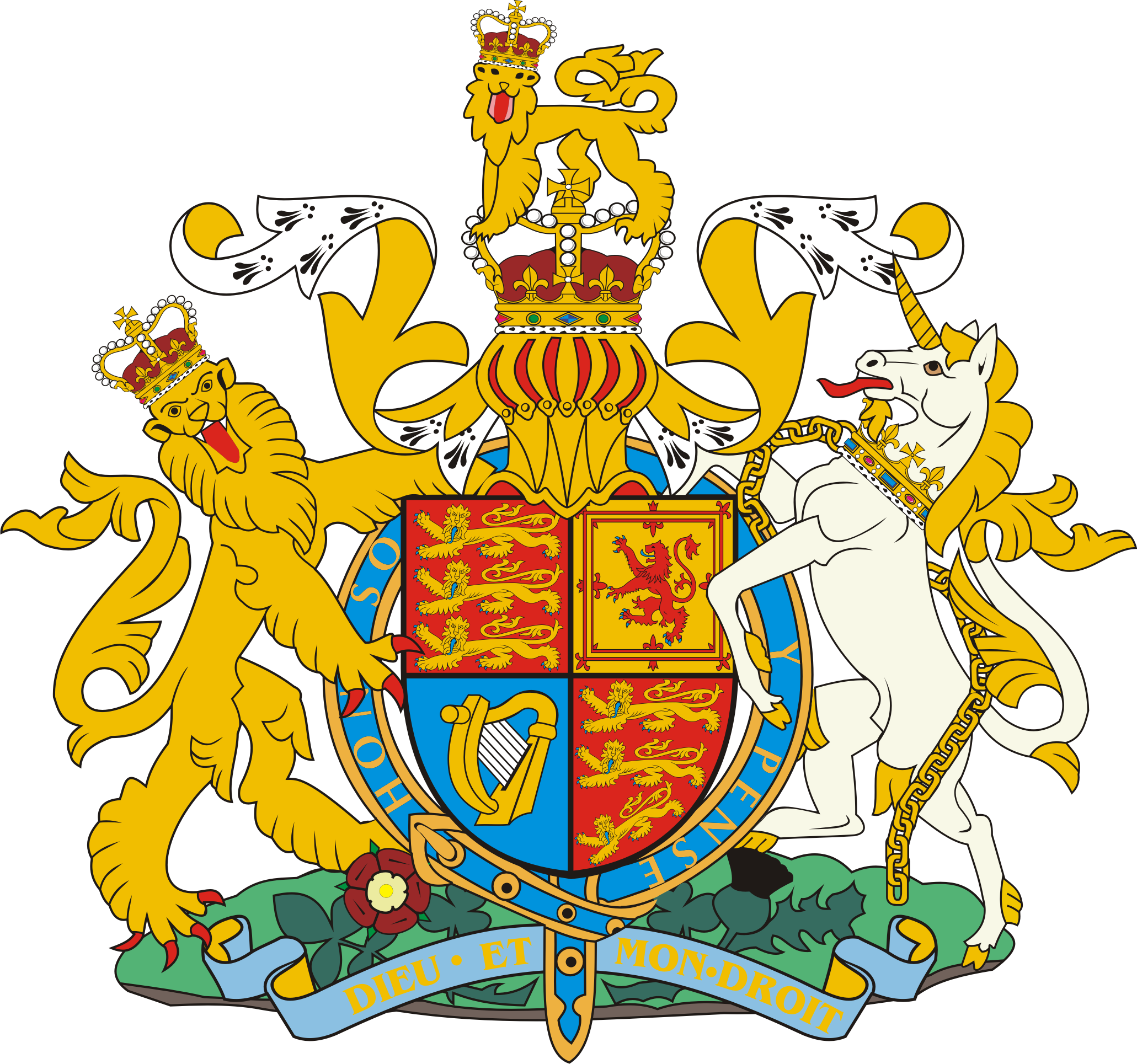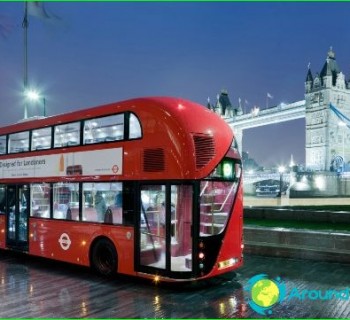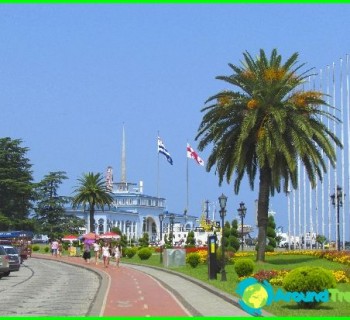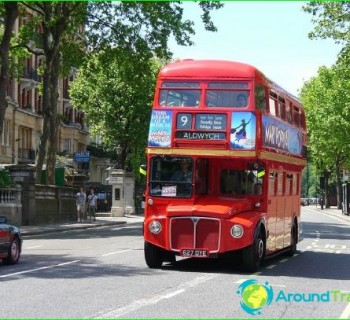Coat of Arms of Great Britain

Royal coat of arms of Great Britain - this is how the full name of the main symbol of foggy Albion sounds. It belongs to the usually reigning monarch, in this case Queen Elizabeth II. Members of her royal family, members of the English government have different coats of arms.
On the other hand, there are two versions of the royal coat of arms, one of which is used in Scotland and has certain differences..
Regular royal coat of arms...
Oddly enough, in the distant cold England they love exotic southern animals, because from all the wealth of the local fauna, the inhabitants of the kingdom could not find worthy representatives, strong, courageous, brave, who could personify the country and its power. Therefore, lions and leopards appear on the coat of arms, and in different versions, a different number of those and other animals: two lions and seven leopards (called heraldic) - on the royal coat of arms; four lions and three leopards - in the Scottish version.
The appearance of the southern beautiful and dangerous predators is associated with the name of King Richard I. His insane courage and courage was also called the Lionheart, so it is clear that no other animal could take a place on his coat of arms. True, in those years only three animals were depicted. Moreover, for some time the British were confused - whether they were lions, or leopards.
Everything flows, everything changes…
The English coat of arms has also undergone changes. They are associated with the events of the Hundred Years War, which is also called the struggle of the leopard and lilies. Certain representatives of the English royal court claimed the French throne, this was reflected in its own way on the coat of arms. The field of the shield was divided into four parts, two of them were still occupied with images of leopards. Two fields became azure and were decorated with golden lilies, considered the emblem of neighboring France. Henry IV made his own changes to the coat of arms, leaving only three lilies on it.
The following changes awaited the main symbol of the country under King James I, who made an addition in the form of the emblems of Ireland (golden harp) and Scotland (lion placed in a golden field).
During the reign of Queen Victoria, at the turn of the 19th and 20th centuries, the coat of arms of Great Britain finally acquired a form that remains unshakable to this day. The shield is supported by the lion, the symbol of England, and the unicorn, respectively, the symbol of Scotland. The shield itself consists of four parts, which depict:
- three leopards or lions - as representatives of the coat of arms of England (in the first and fourth parts);
- the lion, symbolizing the coat of arms of Scotland (in the second part);
- harp - beautiful coat of arms of Ireland (in the third quarter).
All this splendor is surrounded by a blue ribbon with the inscription.


